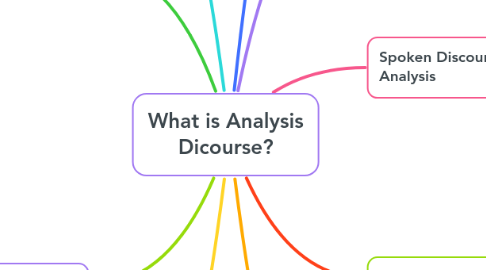
1. Speech Acts and Discourse Structures
1.1. focuses on understanding
1.1.1. how utterances perform actions beyond conveying information
1.2. involve analizing
1.2.1. how language is organized
1.2.2. sequenced in longer stretches of communication.
2. Written Discourse
2.1. written discourse is a crucial focus
2.2. Interpreting and understanding
2.2.1. Coherence=act of reading text
2.3. written texts
2.3.1. considering aspects such as
2.3.1.1. genre
2.3.1.2. style
2.3.1.3. discourse markers.
3. Form & Function
3.1. explores
3.1.1. how language is structured (form)
3.1.2. how it serves
3.1.2.1. various purposes
3.1.2.2. functions in communication
3.2. Eric's Intonation
3.2.1. Show Description
3.2.2. Intonation Analysis
3.3. examines
3.3.1. linguistic elements
3.3.1.1. Rise and Fall in
3.3.2. contextual meanings
3.3.2.1. High Pitch Level
4. Conversations Outside the Classroom
4.1. how language is used in everyday conversations beyond the classroom setting.
4.2. teachers prepare learners for real-life communication.
5. The Scope of Discourse Analysis
5.1. aspect of language use
5.1.1. semantics
5.1.2. syntax
5.1.3. pragmatics
5.1.4. sociolinguistics
6. Text and Interpretation
6.1. how texts are constructed
6.2. Interpretation = set of procedures
6.3. role of context, cultural factors, and the reader's interpretation in understanding texts.
7. Spoken Discourse: Models of Analysis
7.1. examining
7.1.1. conversations
7.1.2. spoken interactions
7.2. models
7.2.1. conversation analysis
7.2.1.1. Studies the structure and organization of talk in natural settings.
8. Talk as a Social Activity
8.1. social nature of language
8.2. how language is used to
8.2.1. negotiate relationships
8.2.2. power dynamics
8.2.3. social identities
9. Historical Overview of Discourse Analysis
9.1. British Tradition
9.1.1. M. A. K. Halliday
9.1.1.1. (Functional Approach)
9.1.2. Sinclair and Coulthard
9.1.2.1. (Teacher-Pupil Talk Model)
9.2. Early Influences
9.2.1. Zellig Harris (1952)
9.2.2. Semiotics and French Structuralism
9.2.3. Dell Hymes (Sociological Perspective)
9.2.4. Emergence of Pragmatics
